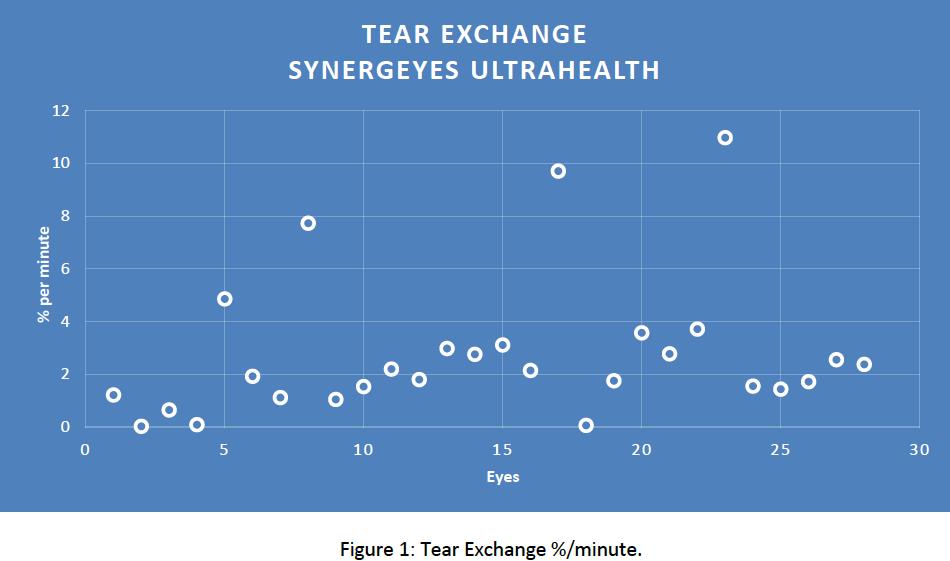In november 2015 Texas Eye Research & Technology Center TERTC investigated tear exchange under UltraHealth lenses in 17 existing contact lens wearers (8 females and 7 males, in age between 24 and 58 years) who were diagnosed with keratoconus. Aim of the study was to assess if tear ventilation in a hybrid modality (SynergEyes) provides tear exchange at sufficient levels to mimic soft or GP contact lenses. It is also suspected that this tear exchange will be enhanced over traditional scleral lens designs.
A biomicroscope with video capability was used to capture the fit of the lenses on the patient’s eyes, and the Visante OCT was used to measure the post-lens tear thickness. This data was transferred to the SynergEyes consultant, who then decided if the lens-eye relationship was acceptable or if a different lens specification needed to be made. The process was continued until the final lens was selected.
With the final lens on the subjects’ eyes, the following steps were taken to measure the post-lens reservoir tear exchange.
- A non-NaFl baseline measurement while wearing the UltraHealth lens with unpreserved saline (Unisol) was obtained with the Fluorotron Master FS2 Fluorophotometer.
- Subsequently the UltraHealth lens was filled with high molecular weight NaFl (FITC-Dextran) mixed with unpreserved saline (Unisol) for the Fluorotron measurements.
- The initial Fluorotron measurement was taken five minutes after lens insertion. Measurements (approximately every 5 minutes) were undertaken until the fluorescein concentration approximated baseline.
- Tear exchange decay curves were plotted for each eye.
Results
For the eye practitioner managing significant irregular astigmatism, which may not be handled by a soft toric design, there are only two options – the hybrid or the scleral lens. Therefore, the clinical performance of the UltraHealth is best compared to scleral lenses.
The corneal GP is often able to provide good vision, which nevertheless is not as stable as that experienced through hybrid and scleral lenses but the corneal lens carries with it a serious comfort deficit. The present study generated data indicating that the hybrid contact lens is superior to the scleral contact lens with regards to post-lens tear exchange.
Although the threshold tear exchange under a lens has yet to be quantified, clinical experience suggests that for many, if not most, scleral lens wearers 1%/minute is sufficient for successful contact lens wear. (Skidmore et al, 2015)
Results of the study
Tear exchange range for the subjects was between 0.021 and 10.95 %/min. (Figure 1)
Conclusion of the TERTC report.
The current design improvements with hybrid lenses appear to have elevated this decay rate, nearly doubling it from that measured with scleral contact lenses.
If you want to receive report or a an electronic copy of the Hybrid Orthokeratoly Poster please send email to:
Ruud van ’t Pad Bosch, SynergEyes® at: This email address is being protected from spambots. You need JavaScript enabled to view it.

